Wondering how to eat carbs without gaining fat? You’re not alone.
From keto warriors to fitness influencers, it seems like everyone is preaching a low-carb gospel. But is avoiding carbs really the key to staying lean and healthy? Or is there a smarter way to enjoy them without tipping the scale?
If you’ve ever felt guilty about eating a bowl of pasta or skipping bread in fear of gaining weight, you’re not alone. Carbohydrates are often misunderstood—but they’re not the enemy. In fact, when eaten correctly, carbs can fuel your body, boost your metabolism, and even support fat loss.
In this article, we’ll break down the truth about carbs, bust common myths, and show you how to eat them without gaining fat. Whether your goal is to lose weight, maintain muscle, or simply feel better, understanding the science of smart carb consumption is a game-changer.
Carbohydrates 101: What They Really Do in Your Body
Understanding how carbs work in your body is the first step toward using them wisely. Despite their negative reputation, carbohydrates are one of the three essential macronutrients—alongside proteins and fats—and they serve critical roles in your health and performance.
What Are Carbohydrates?
Carbohydrates are molecules composed of carbon, hydrogen, and oxygen. They are found in various forms—simple (sugars), complex (starches), and fibrous (dietary fiber). Regardless of form, all digestible carbs are eventually broken down into glucose, your body’s preferred energy source.
- Simple carbs include sugar, soda, and pastries—quick to digest, fast to spike blood sugar.
- Complex carbs include whole grains, legumes, and vegetables—slower to digest, longer-lasting energy.
- Fibrous carbs such as leafy greens and beans are essential for gut health and controlling appetite.
The Role of Carbs in Metabolism
When you consume carbs, your pancreas releases insulin—a hormone that helps shuttle glucose into your cells to be used as fuel or stored as glycogen in the liver and muscles. When those stores are full, excess glucose may be converted into fat.
But here’s the kicker: carbs don’t automatically make you fat. Fat gain results from consistently consuming more calories than you burn, regardless of the macronutrient source. The type, timing, and amount of carbs you eat play a major role in how your body responds.
Why Your Brain and Muscles Love Carbs
Your brain consumes about 120 grams of glucose daily. During workouts, your muscles rely heavily on stored glycogen derived from carbs. Low-carb diets can impair cognitive function and decrease exercise performance if not properly managed.
The Metabolic Role of Carbs in Fat Storage vs. Fat Burning
Your metabolism doesn’t see all calories equally. The hormonal and metabolic context of carb consumption determines whether they’re burned for fuel or stored as fat. Here’s what happens in different dietary environments:
| Dietary Context | Metabolic Response | Impact on Fat Storage |
|---|---|---|
| Post-Workout (High Intensity) | Insulin sensitivity ↑, glycogen depleted | Low – carbs stored in muscle, not fat |
| Sedentary + Caloric Surplus | Insulin spikes, little glycogen usage | High – excess carbs more likely stored as fat |
| Low-Carb Diet Phase | Glycogen low, fat oxidation ↑ | Minimal carb storage; risk of muscle loss |
| Balanced Diet + Physical Activity | Efficient glucose use, balanced insulin | Minimal with proper calorie control |
Why Carbs Are Essential in Hormonal Balance
Carbohydrates influence several hormones beyond insulin, such as:
- Leptin: Satiety hormone regulated in part by carb intake. Very low-carb diets can suppress leptin, increasing appetite.
- Cortisol: Chronic low-carb intake may raise cortisol, a stress hormone linked to abdominal fat gain.
- Thyroid Hormones: Long-term carb restriction may lower T3 (active thyroid hormone), slowing metabolism.
Maintaining moderate, quality carb intake—especially during active phases—supports hormonal health and long-term fat control.
Glycemic Index vs. Glycemic Load
Many focus on the glycemic index (GI)—a measure of how quickly a food spikes blood sugar. But the glycemic load (GL) is a more accurate measure, considering both the type of carbohydrate and the amount.
| Carbohydrate Type | GI Rating | Common Examples |
|---|---|---|
| High GI | 70+ | White bread, soda |
| Medium GI | 56–69 | Brown rice, bananas |
| Low GI | 55 or less | Lentils, oats |
📌 Did You Know?
Eating a high-GI carb like white rice with a protein source like chicken significantly lowers its glycemic response. Combining carbs with protein or fat slows digestion and minimizes blood sugar spikes.
Why Carbs Don’t Automatically Make You Fat
Carbs are often blamed for fat gain, but the truth is more nuanced. Weight gain results from a sustained calorie surplus—not simply eating carbs. Understanding how your body stores fat, how insulin behaves, and how timing influences fat storage is essential to developing a healthy relationship with carbohydrates.
Calories In vs. Calories Out: The Real Equation
At its core, weight management is about energy balance. If you consume more energy (calories) than your body burns, the excess will be stored—sometimes as glycogen, but often as fat. This applies whether those calories come from carbs, fats, or protein.
Carbs have 4 calories per gram—the same as protein, and fewer than fat (9 cal/g). The problem isn’t carbs themselves, but the type of carbs and the context in which they’re consumed.
- Eating refined carbs in excess (white bread, sugary snacks) is easy because they’re calorie-dense and quickly digested.
- Whole-food carbs (like quinoa or sweet potatoes) are more filling and nutrient-rich, making overconsumption less likely.
Insulin: Hormone, Not Villain
Insulin is frequently misunderstood. While it does promote fat storage, it’s also essential for nutrient absorption, muscle recovery, and overall metabolism.
Here’s the truth: insulin alone doesn’t make you fat. What matters is whether it’s chronically elevated due to overeating, inactivity, or excessive intake of refined sugars.
- Insulin spikes after high-carb meals—but also after high-protein ones.
- Frequent large insulin spikes from sugary meals combined with calorie surplus are what promote fat storage—not insulin itself.
✅ Expert Summary
According to the National Institutes of Health (NIH), insulin’s role in fat gain is indirect and largely dependent on overall energy balance. In the absence of a caloric surplus, insulin does not lead to fat gain—even when carbs are high.
Carb Timing and Activity Levels
Your body’s sensitivity to insulin improves after exercise. That means your muscles are more likely to absorb carbs for glycogen replenishment rather than converting them to fat.
- Best time to eat carbs: Post-workout or during high-activity periods.
- Worst time to eat excessive carbs: At night after sedentary behavior, especially refined ones.
This is why carb timing is crucial. Strategic intake can improve performance, recovery, and body composition without fat gain.
How Stress and Sleep Affect Carb Storage and Fat Gain
Even with a perfect diet, high stress and poor sleep can sabotage your body’s ability to handle carbs effectively. Here’s how:
- Cortisol, the primary stress hormone, rises with lack of sleep, overtraining, or emotional stress. It reduces insulin sensitivity, meaning carbs are more likely to be stored as fat.
- Sleep deprivation decreases leptin (satiety hormone) and increases ghrelin (hunger hormone), leading to more carb cravings—particularly for sugary or refined types.
- Chronically elevated cortisol also encourages visceral fat storage, especially in the abdominal region.
According to a study published in The Journal of Clinical Endocrinology & Metabolism, just one week of restricted sleep (4–5 hours/night) resulted in significant insulin resistance in healthy individuals.
✅ Expert Summary
If you’re under chronic stress or not sleeping 7–8 hours consistently, your body will process carbs differently—favoring storage over oxidation. Managing lifestyle is just as critical as managing macros.
Lifestyle > Macros: The Bigger Picture
You could eat the cleanest carbs in the world—quinoa, oats, wild berries—but if your lifestyle is high-stress, sedentary, and sleep-deprived, your body will treat those carbs differently. The goal is to optimize both:
- Eat quality carbs within a controlled caloric intake
- Reduce stress through mindfulness, walking, or journaling
- Sleep at least 7–8 hours per night consistently
💡 Quick Tip
Consume 50–60% of your daily carb intake around your workout window to support glycogen replenishment and minimize fat storage.
Choosing the Right Carbs: Best Options for Fat Loss
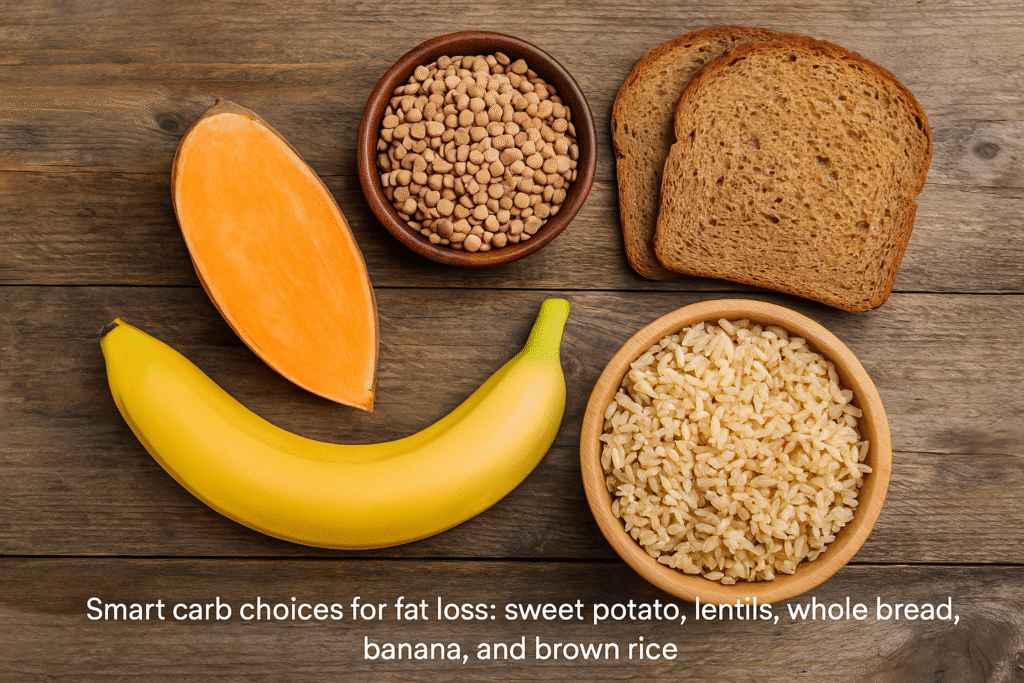
Not all carbs are created equal. Choosing the right types of carbohydrates can help you stay full longer, stabilize blood sugar, support workouts, and—most importantly—lose fat. The key lies in prioritizing nutrient-dense, slow-digesting carbs over processed and refined ones.
Complex vs. Simple Carbs: Who Wins?
Complex carbohydrates are your fat-loss allies. Found in whole foods, they digest slowly, provide steady energy, and come packed with fiber, vitamins, and minerals. These include:
- Whole grains like quinoa, oats, and brown rice
- Legumes such as lentils, black beans, and chickpeas
- Vegetables like sweet potatoes, squash, and carrots
Simple carbohydrates, on the other hand, digest quickly and can spike blood sugar levels—potentially leading to increased hunger and overeating. These include:
- White bread and pasta
- Candy, cookies, pastries
- Sugary drinks and processed snacks
Fiber: The Secret Weapon in Fat Loss
Fiber slows digestion, supports gut health, and reduces appetite. Studies show diets high in soluble fiber are associated with reduced abdominal fat.
Aim for:
- 25–30g of fiber per day for most adults
- Choose carbs with at least 3g fiber per serving
The Best Carb Choices for Fat Loss
| Food | Carb Type | Benefits |
|---|---|---|
| Oats | Complex, Low GI | High fiber, improves satiety |
| Quinoa | Complex, Gluten-Free | Complete protein, rich in minerals |
| Lentils | Complex, High Fiber | Regulates blood sugar, very filling |
| Sweet Potatoes | Complex, Antioxidant-Rich | Boosts immunity, low glycemic load |
| Berries | Simple, Low GI | Rich in fiber and antioxidants |
Smart Grocery Tips
- Read labels for fiber and sugar content
- Shop the outer perimeter of the grocery store
- Choose carbs with visible texture—whole grains, not “white” versions
Introducing the Carb Quality Index (CQI)
Not all “healthy carbs” are created equal. Researchers have developed a Carbohydrate Quality Index (CQI) that scores carbs based on four primary metrics:
- Fiber content
- Glycemic Index (GI)
- Whole grain presence
- Ratio of total carbs to fiber
A high CQI means the carb is nutrient-dense, slow-digesting, and supportive of weight control and metabolic health.
| Food | Fiber (g/100g) | GI | CQI Score (1–10) |
|---|---|---|---|
| Lentils | 8 | 32 | 10 |
| Brown Rice | 1.8 | 50 | 7 |
| White Bread | 1 | 75 | 3 |
| Oats | 7 | 40 | 9 |
Choosing Carbs Based on Your Goal
Each person’s optimal carb intake depends on their goal, body composition, and training level. Here’s a quick guide:
- Fat Loss (Sedentary): Choose high-CQI carbs like vegetables, berries, lentils. Keep carbs around workouts or early meals.
- Fat Loss (Active): Include oats, quinoa, fruit, and root veggies. Adjust portion size—not remove carbs entirely.
- Muscle Gain or Performance: Use high-CQI and moderate-CQI carbs more freely—sweet potatoes, brown rice, bananas—especially around training windows.
📌 Did You Know?
A 2021 review in *Nutrients* found that a high Carb Quality Index was associated with lower risk of obesity, type 2 diabetes, and cardiovascular disease—regardless of total carb intake.
Carb Timing: When to Eat Carbs for Maximum Fat Burn
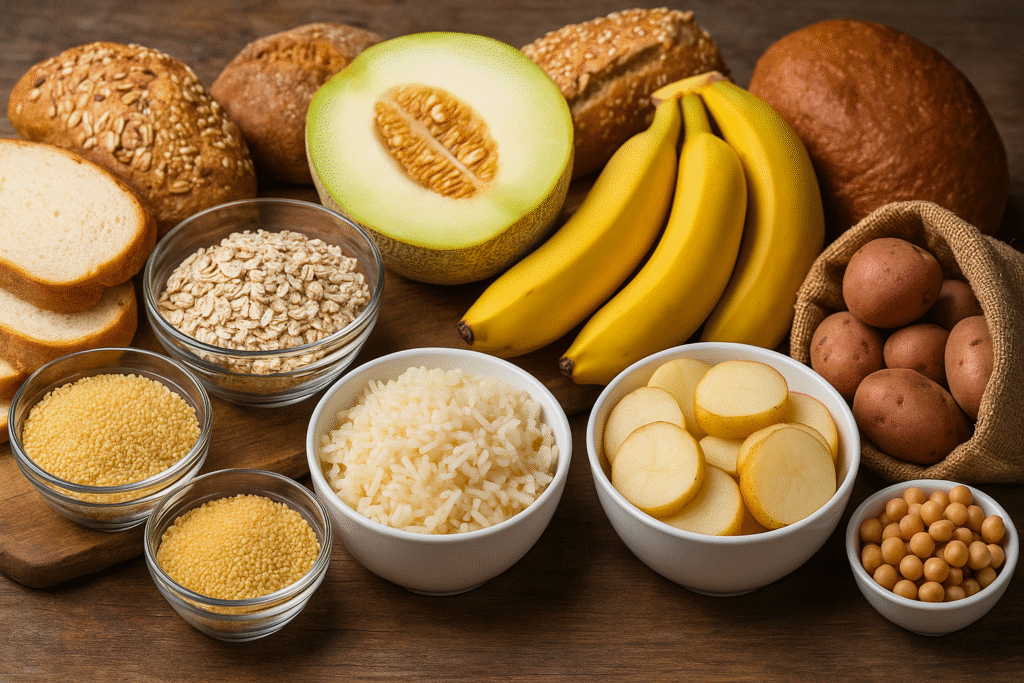
The timing of your carb intake can dramatically influence how your body uses them—either for energy or for fat storage. By aligning carbohydrate consumption with your body’s natural hormonal rhythms and activity levels, you can boost fat burning and enhance performance.
Understanding Insulin Sensitivity
Insulin sensitivity refers to how effectively your cells respond to insulin. Higher sensitivity means glucose is readily absorbed into muscle cells, not stored as fat. This sensitivity peaks:
- After resistance training or intense cardio
- In the morning for some people, depending on cortisol rhythm
- When muscle glycogen is depleted
Consuming carbs during these windows helps direct glucose into muscles, where it’s used for recovery—not fat gain.
Pre- and Post-Workout Carbs: A Strategic Window
Post-workout is arguably the best time to eat carbs if your goal is to stay lean.
- Pre-workout carbs (1–2 hours before): Provide energy and preserve muscle.
- Post-workout carbs (within 1–2 hours): Replenish glycogen, support recovery, lower cortisol.
💡 Quick Tip
Consume 30–60g of carbs post-workout along with protein for optimal recovery and to minimize fat storage.
Carb Cycling: An Advanced Strategy
Carb cycling involves alternating high-carb and low-carb days based on your activity levels.
- High-carb days: On training days—fuel workouts and aid muscle growth
- Low-carb days: On rest days—enhance fat burning and insulin sensitivity
This approach can maximize fat loss while maintaining metabolic flexibility and energy levels.
✅ Expert Summary
Research from the Journal of the International Society of Sports Nutrition shows that targeted carbohydrate timing improves body composition, performance, and recovery without increasing fat mass—even in calorie-controlled diets.
Sample Carb Timing by Activity Level
One of the most effective strategies for eating carbs without gaining fat is to adapt your intake based on your daily energy demand. Below are example routines for three common profiles to guide your timing and portioning:
🧍 Profile 1: Sedentary Professional (Desk Job, 3 workouts/week)
- Goal: Fat loss with metabolic health
- Strategy: Low-moderate carbs, focused around morning and post-training
| Meal | Carb Type | Portion (g carbs) | Notes |
|---|---|---|---|
| Breakfast | Oats + berries | 30g | Supports energy, minimizes cravings |
| Lunch | Quinoa + leafy greens | 25g | Balanced with fats/proteins |
| Snack | Greek yogurt + blueberries | 15g | Low GI, supports satiety |
| Dinner | Zucchini + lentils | 20g | Non-starchy, slow digesting |
🏃 Profile 2: Recreationally Active (Gym 4–5x/week, walks daily)
- Goal: Recomposition or fat loss with muscle maintenance
- Strategy: Carb intake peaks pre- and post-workout, moderate throughout day
| Meal | Carb Type | Portion (g carbs) | Notes |
|---|---|---|---|
| Pre-Workout | Banana + rice cake | 25g | Quick energy source |
| Post-Workout | Rice + chicken + veggies | 45g | Replenishes glycogen |
| Afternoon | Sweet potato | 30g | Supports recovery |
| Dinner | Broccoli + chickpeas | 20g | High-fiber finish |
🏋️ Profile 3: Amateur Athlete (Endurance or strength-focused)
- Goal: Performance and muscle recovery
- Strategy: High daily carb intake, focused around training window and breakfast
| Meal | Carb Type | Portion (g carbs) | Notes |
|---|---|---|---|
| Breakfast | Oats + banana + whey | 50g | Kickstarts recovery |
| Pre-Workout | White rice + egg | 40g | Fast digesting fuel |
| Post-Workout | Pasta + lean meat + spinach | 60g | Peak carb timing |
| Evening | Lentils + quinoa + carrots | 40g | Sleep and glycogen restoration |
💡 Quick Tip
Carbs don’t need to be “earned”—but when timed around physical activity, they are more likely to support fat-burning and recovery instead of fat storage.
Evening Carbs: Friend or Foe?
Contrary to popular belief, eating carbs at night does not inherently cause fat gain. In fact, consuming carbs in the evening may:
- Promote serotonin and melatonin production for better sleep
- Support muscle glycogen restoration if workouts occur in the afternoon
- Improve morning insulin sensitivity via better rest
However, avoid high-sugar or refined carbs late at night—stick to whole sources like lentils, brown rice, or vegetables if needed.
📌 Did You Know?
A 2011 study in *Obesity* found that overweight men who ate most of their carbs at dinner experienced greater fat loss and improved insulin sensitivity compared to those who ate them throughout the day.
What the Research Says: Carbs and Fat Loss in Clinical Studies
Despite popular belief, clinical research does not support the idea that low-carb diets are inherently superior for fat loss. When calories and protein are controlled, the amount of carbohydrates plays a much smaller role than often claimed.
Key Findings from Peer-Reviewed Research
- Meta-Analysis (BMJ, 2020)
A comprehensive review of 121 randomized controlled trials concluded that low-fat and low-carb diets produce similar weight loss at 6–12 months when caloric intake is matched.
Source: BMJ 2020 - The DIETFITS Study (JAMA, 2018)
In a 12-month study of over 600 adults, both low-fat and low-carb groups lost nearly identical amounts of weight—regardless of genetic factors or insulin response.
Quote: “There was no significant difference in weight change between a healthy low-fat diet vs. a healthy low-carb diet.”
Source: JAMA - Nutrients Review (2021)
A high Carbohydrate Quality Index (CQI)—rich in fiber, low-GI, and whole-food carbs—was strongly linked with lower rates of obesity, diabetes, and cardiovascular risk.
Source: Nutrients
Why It Matters for You
- Carb restriction works largely due to caloric reduction, not because carbs are inherently fattening.
- Carb quality (fiber, glycemic load) is more important than quantity.
- A balanced, moderate-carb diet supports long-term adherence better than extreme restrictions.
✅ Expert Summary
Clinical studies consistently show that calorie-controlled diets with moderate, high-quality carbs result in equal or greater fat loss than restrictive low-carb plans—especially when exercise and protein intake are optimized.
How to Reintroduce Carbs After Low-Carb Diets Without Gaining Fat
Many people fear regaining fat when transitioning off low-carb or ketogenic diets. While it’s true that increasing carbs can temporarily increase water weight (due to glycogen storage), you won’t regain fat unless you return to a calorie surplus. The key is doing it gradually and strategically.
Why You Gain Weight Quickly After Reintroducing Carbs
- Glycogen binds water: For every gram of glycogen stored, your body retains about 3 grams of water. This can cause a 2–4 lb increase on the scale within a few days—but it’s not fat.
- Insulin response returns: After low-carb adaptation, reintroducing carbs can spike insulin and lead to bloating or sluggishness if done too quickly.
The Step-by-Step Reintroduction Plan
- Week 1–2: Start with 25–50g/day
Add carbs post-workout only. Focus on low-GI, high-fiber sources like oats, berries, lentils. - Week 3–4: Increase to 75–100g/day
Include a small carb portion at lunch and dinner. Monitor digestion, energy, and bodyweight. - Week 5+: Transition to goal-based intake
Shift to a moderate-carb plan (30–40% of total calories) with strategic timing.
Best Practices for a Smooth Transition
- Continue high protein intake to preserve muscle
- Maintain strength/resistance training to increase carb storage capacity
- Stay hydrated to manage glycogen-induced water weight
- Focus on carb quality over quantity
💡 Quick Tip
Use a body tape or waist measurement—not the scale—to track fat gain. Water weight can be misleading when reintroducing carbs.
Breaking Carb Myths: Separating Science from Fear
In the world of fitness and dieting, few topics generate as much confusion—and misinformation—as carbohydrates. From trendy no-carb diets to Instagram fearmongering about bananas, it’s time to set the record straight. Let’s debunk the most common carb myths that are keeping people from optimizing their health and fat loss.
Myth #1: “Carbs at Night Turn Into Fat”
This myth stems from the idea that metabolism slows at night, so any carbs consumed will be stored as fat. But here’s the truth:
- Your body still burns calories while sleeping—especially if you work out regularly.
- Insulin sensitivity can actually improve in the evening in some individuals, depending on meal timing and exercise habits.
- Studies show meal timing has less impact on fat gain than overall caloric balance and macronutrient distribution.
Eating moderate carbs at dinner—especially if you’ve trained that day—can enhance sleep, replenish glycogen, and support recovery.
Myth #2: “Fruits Are Full of Sugar and Should Be Avoided”
Yes, fruits contain natural sugars—but they also deliver fiber, vitamins, antioxidants, and hydration. Unlike processed sugar, the fructose in fruit is buffered by fiber, which slows absorption and mitigates blood sugar spikes.
- Most fruits have a low glycemic index.
- Fruits like berries, apples, and citrus are rich in polyphenols that reduce inflammation.
- There’s no scientific evidence linking moderate fruit consumption to fat gain in healthy individuals.
In fact, research from the Harvard School of Public Health shows that fruit intake is associated with lower BMI and waist circumference—not higher.
Myth #3: “Bread and Pasta Should Be Eliminated”
Refined white bread and pasta have been linked to weight gain because they’re energy-dense and nutrient-poor. But not all breads and pastas are created equal.
Whole grain versions, sprouted breads, and lentil- or chickpea-based pastas offer:
- More fiber and protein
- Slower digestion
- Greater satiety
Rather than eliminating these foods, choose better versions and monitor portion sizes.
💡 Quick Tip
Swap white pasta for lentil or chickpea pasta to increase fiber and protein without sacrificing comfort food cravings.
Myth #4: “Low-Carb Diets Are Always Better for Fat Loss”
While low-carb diets can be effective for short-term weight loss, they’re not superior to other diets when calories and protein are controlled.
- A review in the American Journal of Clinical Nutrition found no significant difference in fat loss between low-carb and moderate-carb diets over 12 months.
- Low-carb diets may cause muscle loss, lower performance, and mood issues in some individuals—especially if not properly planned.
The best diet is the one you can sustain long-term. For many, this includes moderate, strategic carbohydrate intake.
✅ Expert Summary
Fad diet myths surrounding carbohydrates lack scientific backing. Strategic carbohydrate intake—especially from whole-food sources—supports metabolic health, fat loss, and performance when aligned with individual energy needs and activity levels.
Conclusion
Carbohydrates aren’t the villain they’re made out to be. When chosen wisely and consumed strategically, carbs can support your metabolism, fuel your workouts, and help you lose fat—not gain it.
Instead of fearing carbs, embrace them as a vital macronutrient. Focus on high-fiber, low-GI options, pair them with protein, and time your intake around activity. The result? Better energy, improved performance, and sustainable fat loss.
The truth about carbs is simple: it’s not about cutting them out—it’s about getting them right.
📌 Main Takeaways
- Carbs don’t cause fat gain on their own—caloric surplus does.
- Whole, complex carbs like oats, quinoa, and lentils support fat loss.
- Timing matters: post-workout and high-activity periods are ideal for carbs.
- Insulin is not your enemy; misused carbs and refined sugars are.
- Fruits and whole grains are nutrient-rich and should not be feared.
🔗 Further Reading
Want to supercharge your results even more?
Carbs are just one part of the equation. Explore what else you can do to fuel fat loss, fight inflammation, and stay naturally energized:
Top Anti-Inflammatory Foods That Help You Burn Fat Naturally
Moringa Magic Review: The Truth Behind Its Weight Loss and Health Benefits

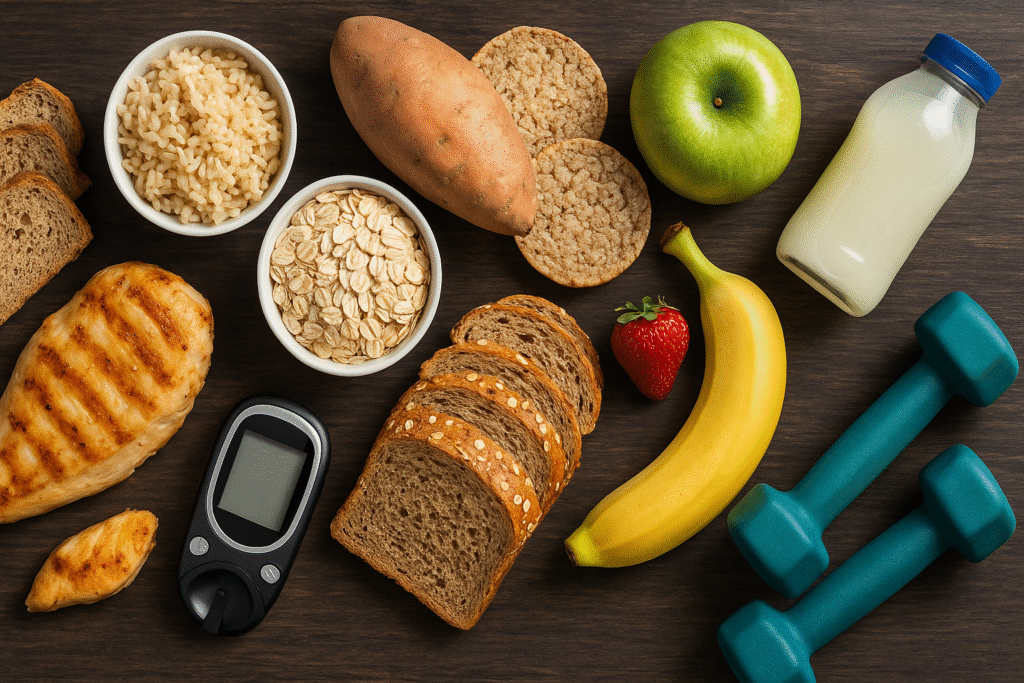







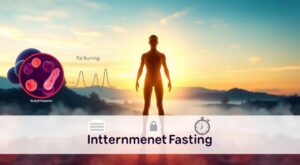

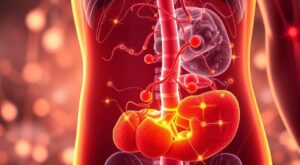
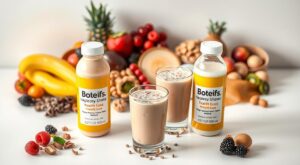
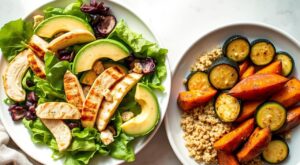

One Response